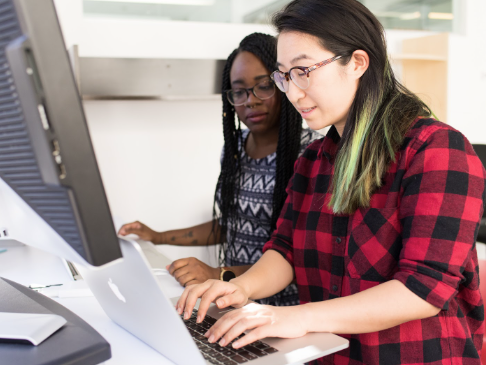Ensuring adequate funding for schools is crucial to providing high-quality education and equal opportunities for all students. Traditional models often rely on property taxes, state funding, and government grants. While these sources remain important, schools are increasingly exploring innovative funding models that can supplement resources, promote equity, and support long-term educational goals. These new approaches not only address funding gaps but also encourage creativity, collaboration, and sustainability in how schools operate and serve their communities.
Why Rethink School Funding?
Many schools face budget challenges that limit their ability to invest in updated materials, technology, extracurricular programs, and teacher development. Disparities in funding often reflect economic differences between communities, leading to unequal access to learning opportunities. Rethinking school funding is not about replacing traditional methods but enhancing them to meet modern educational demands. With evolving technologies, workforce needs, and social challenges, schools require flexible, forward-thinking funding strategies that can adapt and grow over time.
Public-Private Partnerships
One promising approach is forming partnerships with local businesses, nonprofit organizations, universities, and community stakeholders. These collaborations can provide financial support, in-kind donations, and volunteer services. For example, a tech company might sponsor a computer lab, provide software licenses, or host coding workshops for students. In return, businesses benefit from positive community engagement and the development of future talent.
Public-private partnerships can also include mentoring programs, internships, or shared-use agreements where community facilities serve educational purposes. Schools can work with hospitals for health education, law firms for civics programs, or media organizations for journalism clubs. These partnerships strengthen ties between schools and the local economy, offering real-world relevance to classroom learning.
Grant Writing and Competitive Funding
Schools can also pursue competitive grants offered by foundations, corporations, and government agencies. While grant writing requires planning, collaboration, and a compelling vision, successful proposals can unlock funding for specific projects such as STEM labs, literacy initiatives, mental health programs, or teacher training.
Investing in staff or consultants with grant expertise can yield long-term benefits by opening new revenue streams. Building a database of past grant opportunities, successful applications, and evaluation strategies can help schools become more effective and efficient in applying for and managing grants.
Crowdfunding and Community Campaigns
Crowdfunding platforms such as DonorsChoose, GoFundMe, or school-specific portals allow schools and teachers to raise money for targeted needs through community support. Teachers and administrators can launch online campaigns for items like classroom supplies, library books, or new art and music equipment. These efforts often gain traction when supported by compelling storytelling, transparent financial reporting, and regular updates.
Community fundraising events—such as walkathons, talent shows, auctions, or school fairs—not only generate revenue but also build school spirit and foster stronger connections among students, parents, teachers, and community members. Schools that consistently engage their communities are more likely to receive sustained support.
Social Impact Bonds and Innovation Funds
Social impact bonds (SIBs) are performance-based funding models where private investors provide upfront capital for educational programs with the understanding that repayment depends on achieving agreed-upon outcomes. These models have been used to support early childhood education, dropout prevention programs, and career-readiness initiatives. SIBs create accountability through measurable goals and can attract funders who are motivated by both social impact and financial return.
Innovation funds—established by school districts, philanthropists, or education-focused nonprofits—can support pilot projects or experimental approaches that aim to improve learning outcomes. These funds allow educators to test creative strategies, evaluate their effectiveness, and scale successful models across more classrooms or schools. Examples might include implementing blended learning models, expanding maker spaces, or developing personalized learning platforms.
Alumni and Foundation Networks
Alumni networks and school foundations are valuable, often underutilized sources of support. Schools can reach out to former students, many of whom are eager to give back, especially when they feel a personal connection to the school’s mission. Alumni can contribute through donations, mentorship, career talks, and fundraising campaigns.
School foundations, often led by a board of committed community members and parents, can manage long-term giving strategies, organize endowments, and build sustainable financial support through planned giving, corporate matches, and legacy gifts. These entities can serve as a stable backbone for schools seeking consistent supplemental funding.
Technology and Subscription-Based Models
Some schools have also begun leveraging digital platforms to create subscription-based educational content or courses, particularly for specialized programs such as coding, language learning, or arts enrichment. These offerings can generate modest revenue while expanding access to learning resources for a wider community. Collaborations with edtech companies can also open the door for licensing arrangements or joint ventures that benefit schools.
Micro-Investment and Peer-to-Peer Lending
A newer funding trend involves micro-investment platforms or peer-to-peer lending networks where individuals can contribute small amounts to support school projects or initiatives. While still emerging in the education sector, these models offer another flexible and community-driven way to fund innovation in schools.
Conclusion
Innovative funding models offer schools the opportunity to expand their resources, reduce inequities, and invest in meaningful educational experiences. Whether through partnerships, grants, community campaigns, or performance-based funding, these strategies require collaboration, creativity, and vision. By diversifying funding sources and engaging their broader communities, schools can build sustainable support systems that empower both educators and learners to thrive.
As the educational landscape evolves, schools that adopt innovative funding strategies will be better equipped to meet new challenges, seize emerging opportunities, and ensure that all students—regardless of background—receive the tools and support they need to succeed.


